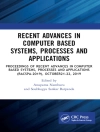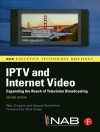This book gathers a set of peer-reviewed works at the intersection between music, sound, and image research and practice. They are based on presentations contributed to the EIMAD–Meeting of Research in Music, Arts and Design conference, held at the Polytechnic University of Castelo Branco, Portugal, in 2020 and 2022, under the theme: ‘Sounding Images”. Authored by researchers in musicology, musical iconography, cinema and audiovisuals, digital arts, composition, sound art, and data sonification, the 21 chapters of this book offer a valuable resource and source of inspiration for professionals, researchers and general audiences in these interconnected fields.
Tabella dei contenuti
What does the Restoration of the 1789 Antunes Harpsichord reveal to us.- Alto está Alto mora Looking for the sound of the past for the history of bells in Braga Portugal.- Performing practices and performance spaces at the Royal Sites during the reign of philip V.- The 1785 Antunes harpsichord and its painted imagery an interpretation.- Chinoiseries and chinesices Images of music in sino portuguese paintings from the 18th century.- An Image out of Step the Death Mask of Priest José Maurício Nunes Garcia in the National Historical Museum Collection Rio de Janeiro.- Betw Among Insects and Guitars the Presence of Vanitas Elements in the Work of Amadeo de Souza Cardoso.- What Does Sound Look Like Musical Iconography in the Quilts of Castelo Branco.- Weaving Music Music within Portalegres Tapestries.- Music and Opera in Chinese Propaganda Posters The Kwok On Collection in Portugal.- 3 2 city art and music or three considerations on two murals by Mário Belém.- Preservation as an intertextual practice Addressing the documentation of scenic visual elements in music theatre performances.- Metamorphosis from the Acoustic into the Optical The Picture Form of the Musical Artwork as one of its Thirteen Forms of Existence.- Score with a view Sounding Images Imagining Sound.- Aural architecture the sonorous the acoustic and the auditory.- The Truth of Sound Exploring the impacts of Immersive Location Sound Recording in Realist Filmmaking.- The Problem with Sonification.- Resonant Aesthetics Attention and Synaesthesia in Digital Media Art.- Syntithenai poiēsis perceptual unified objects.- Phonospermia Aesthesic Listening and Sonic Cosmologies.- Sound-to-visual mapping strategies in audiovisual performance and installations.
Circa l’autore
Luísa Correia Castilho received her Ph D in Music and Musicology from the University of Évora in 2009). She gained her Master’s degree in Musical Sciences from the University of Coimbra, with a dissertation on music at the Cathedral of Castelo Branco. She also has a Degree in Musical Sciences from the Universidade Nova de Lisboa and attended the General Singing and Piano Course at the Castelo Branco‘s Conservatory. She works as Coordinating Professor at the Higher School of Applied Arts of the Castelo Branco Polytechnic Institute. She is a member of the Ethics Committee of the IPCB and CESEM, representative of ESART of GAENEE (Office of Support for Students with Special Educational Needs) and Vice-president of the Technical-Scientific Council of ESART. She is an integrated member of CESEM – Center for Sociology and Musical Aesthetics Studies and a contributing member of Age.comm – Interdisciplinary Research Unit – Aging Communities. She participated in congresses, courses, seminars and conferences, national and international, within the scope of musicology and education. She has published articles in national and international magazines. Her areas of interest are: Music, Music Teaching, Music Didactics, Musicology, Musical Iconography.
Rui Sampaio Dias is a composer, media artist and researcher from Braga, Portugal. He holds a Ph D in Digital Media and a master’s degree in Multimedia from the University of Porto, and a degree in Composition from the School of Music and Performing Arts of the Polytechnic Insitute of Porto. He serves as an adjunct Professor at the School of Applied Arts of the Polytechnic University of Castelo Branco – Portugal, where he leads the program in Electronic Music and Musical Production and the master’s degree in Production for Digital Media. Integrated researcher at TECHN&ART – Technology, restauration and Arts Enhancement Center. His topics include: computer music, technologies for music creation and sound design and the creation of interactive multimedia artworks. He presented his work in several countries, and at several conferences including ICMC, SMC, CMMR, Sig Graph Asia, ARTECH, and ARTEFACTO.
Luzia Aurora Rocha studied Musicology in Lisbon (Portugal) and Innsbruck (Austria), and gained a Ph D in Musicology from the Universidade NOVA de Lisboa in 2012. She is currently a researcher at the CESEM, NOVA FCSH; she also coordinates the Work Group on Musical Iconography from ARLAC/IMS and the Musical Iconography Thematic Line from CESEM. Her work spans the fields of Musicology, Musical Iconography, Organology, Semiotics and Cultural Studies with a focus on issues of production, reception, cataloguing of sources and cultural transfer. She has taught at several higher education and university institutions. Luzia Aurora Rocha received a Merit Prize from NOVA University (1999) and benefited from a Ph D grant (FCT, 2006) and two post-doctoral research grants (The Orient Foundation, 2015; CESEM, 2017) before she applied successfully for a contract as a researcher (2019-to date). She is the author and editor of several books. Her work has appeared in peer-reviewed and web-of-science indexed journals. She presented her work, by invitation and as a keynote speaker, in international conferences held in Mexico, Brazil, Cuba, USA, Spain, Italy, Switzerland, Turkey, Russia, China and Japan. She is also an external consultant for the European Union in the fields of Culture and Heritage.
António de Sousa Dias is a composer, multimedia artist, performer and researcher. He holds a doctorate in Aesthetics, Sciences and Technologies of the Arts, a degree in Composition and has been active in composing, research and teaching. His work covers a variety of genres, including instrumental, electroacoustic and mixed genres, as well as music for cinema and audiovisuals, including fiction, documentary and animation. He has also worked in performance, musical theatre and cross-disciplinary forms. He was a member of the Colec Viva group and has collaborated with Grupo Música Nova since 1992. He has also been involved in multimedia, installation and visual creation, and in the preservation of musical heritage, as reflected in the recovery of musical works by composers such as Jorge Peixinho, Constança Capdeville or Jean-Claude Risset. Currently, he serves as an Associate Professor at the Department of Multimedia Art of the Faculty of Fine Arts of the University of Lisbon. He is also a member of the Research Group in Multimedia Art of the Research and Study Centre in Fine Arts (CIEBA-GIAM).












